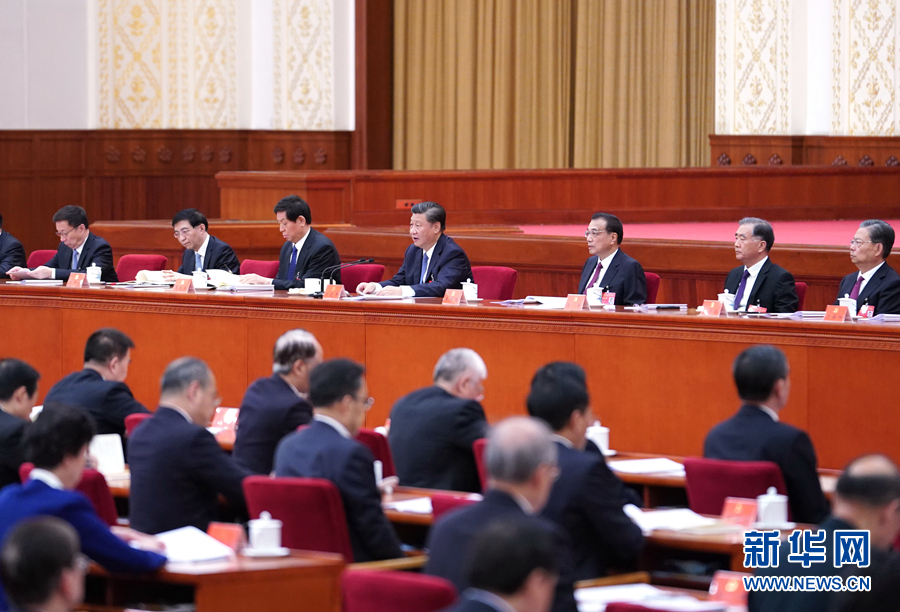
The Chinese Communist Party has just convened its Central Committee in a plenary session. The main objectives were to evaluate the results achieved at the end of the period covered by the 13th Five-Year Plan (2016-2020) and discuss the proposals that will appear in the 14th plan, for the period 2021 a 2025, in addition to goals for a longer term, up until 2035.
Analysis of what has been released so far (official statement) offers a good clue as to how the leaders of the Asian country plan their actions for the coming years, in addition to indicating your expectations regarding the international context in which China will be inserted. More than that, a careful reading of the lines of the plan allows an even better understanding of the current moment of the Chinese communist regime.
The meeting once again ratified President Xi Jinping's total control over the party and, consequently, over the whole Chinese government, without any margin for dissent. References to your strategies, leadership, doctrine and policy are scattered throughout the document, venting its ubiquity in Chinese political life. Like this, it looks like your way to a third term from 2022 is practically assured.
As expected, the committee recognizes the advances that occurred during the 13th Plan. The country would have reached the goal to 2020 to become “a moderately prosperous society”. The country is expected to achieve, at the end of this year, a GDP of 100 trillion yuan, or equivalent to 14,3 trillions of dollars, considerably higher than initially expected. According to official country data, 55,75 millions of people would have been lifted out of poverty, e 60 million urban jobs would have been created.
But the country - like everyone else - is experiencing a challenging time. In 2020, the Chinese economy is expected to grow around 2%. Despite being in the blue, unlike the vast majority of countries in the year of the pandemic, growth is much lower than expected, who was at the 6%.
And this situation is recognized in the document, which attributes to the present moment “profound and complex changes […] in a complex international environment, where instability and uncertainty have increased significantly. ”
To face this situation, the plan suggests some measures to protect the country from external instabilities, such as strengthening the domestic market, anchored by the forecast of the increase of the middle class of 400 millions of people to about 700 millions in 2025. At the same time, emphasizes the need for the country's development to take place based on indigenous technological innovation, ensuring that the country is self-sufficient in key technologies, as in the areas of artificial intelligence, quantum information, integrated circuits and semiconductors, for example, where the technological gap in relation to the USA has not yet been overcome.
But the document does not indicate that China will turn to itself. On the contrary, insists on the idea of a wide openness to the outside world, with a cooperation model in which all partners win, with emphasis on the One Belt initiative, One Road.
No military field, the document is decisive in the decision to accelerate the development of modern military and advanced technology systems and materials. Predict, for the next 5 years, the start of operation of the first strategic long-range bomber with stealth technology (stealth), that makes them invisible to radar, and the third self-made aircraft carrier, the first with the modern system of electromagnetic catapults. The mechanization and modernization of the army is another point highlighted in the, which remembers that in 2027 the People's Liberation Army will complete one hundred years, date that should be commemorated with the achievement of the goals set for the centenary, whatever, those of having the ability to defend Chinese sovereignty on their own territory and in the western Pacific, as well as defend the country's growing interests abroad. The total reunification of Chinese territory and the stability of Macau and Hong Kong, quite sensitive aspects, they are also objectives to be pursued in the future defined by the five-year plan.
It is evident that this type of document must be read with all cautions, if the objective is an exempt analysis. But there is no doubt that he outlines, so much hair that is written, as for your omissions, the message that the CCP Central Committee wishes to pass on to the country's internal public and external observers. And the message is that of a centralized and unified leadership in the Central Committee, with Xi Jinping as the central figure, firmly determined to implement its policies and pursue its objectives.
It is possible that, in the not too distant future, Chinese objectives irreconcilably collide with those of neighbors or other powers. This will take place in clearly defined geographic spaces, like the South China Sea, Hong Kong or Taiwan, or in commercial and technological disputes, as is the case involving 5G internet technology. The Chinese side of the dispute, as seen, already have a clearly defined strategy to face the future that awaits them. It remains to be seen whether the possible opponents or competitors have already outlined their.
on this same topic, also read the analysis by Ambassador Fausto Godoy, The People's Republic of China and its 14th Five-Year Plan
